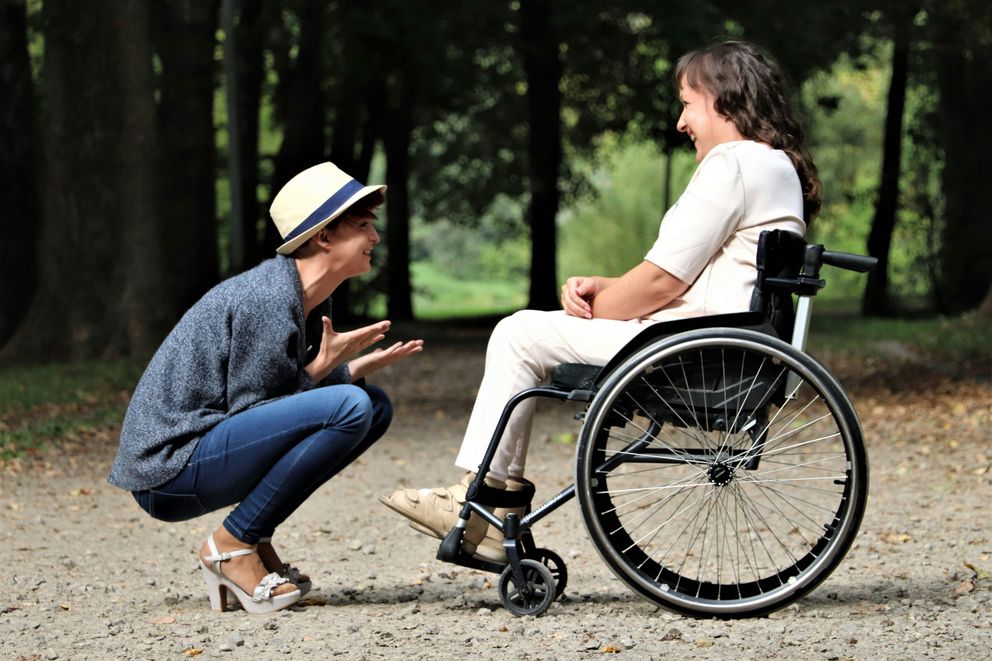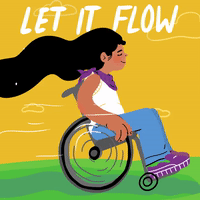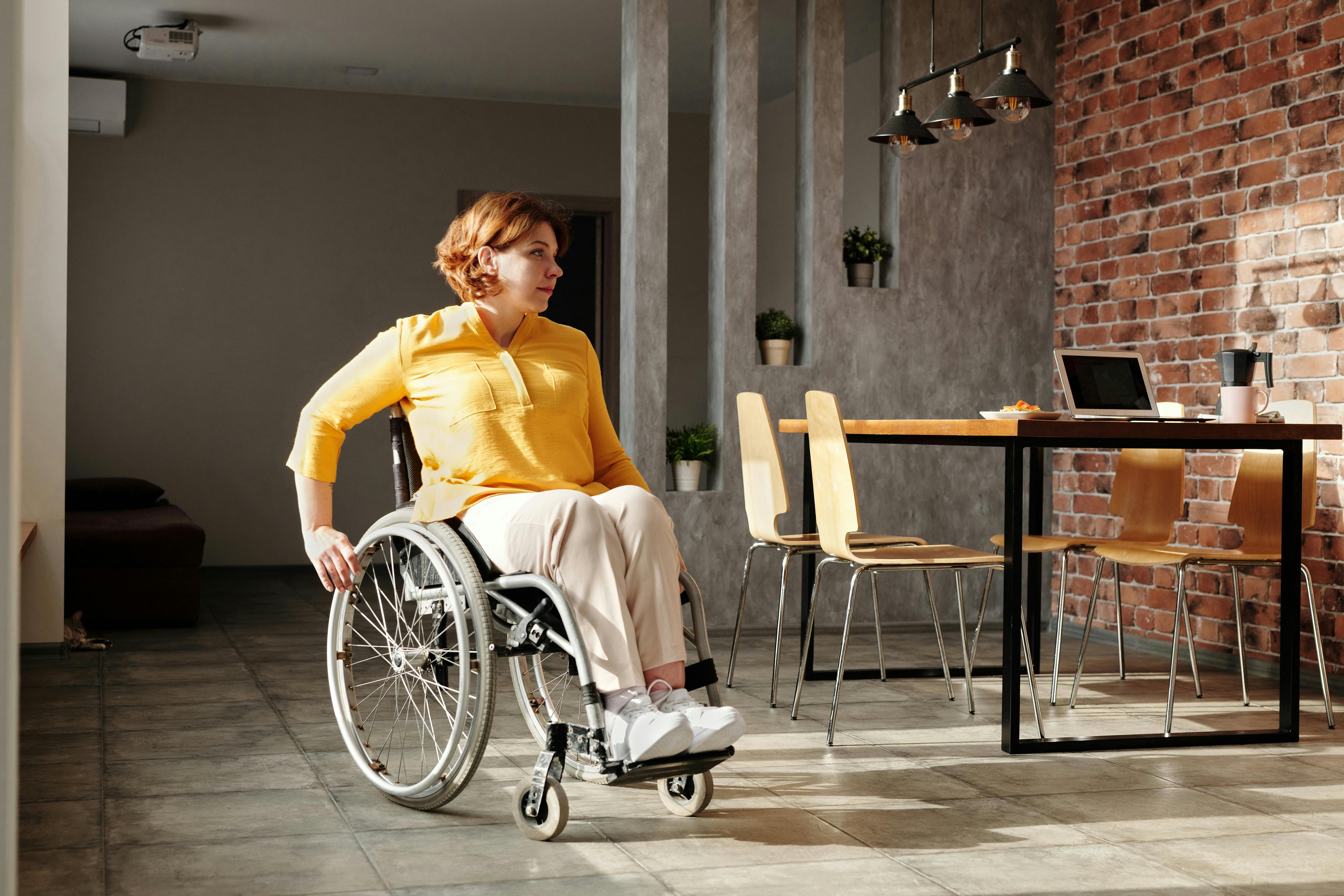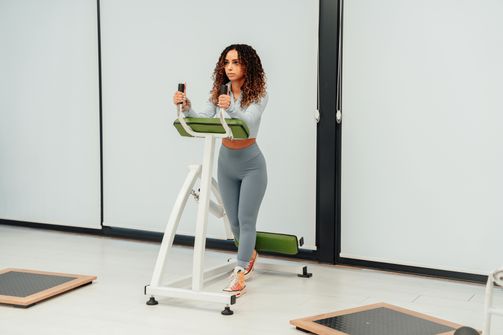
Separating Fact from Fiction: Do Detox Drinks Really Work?
Detox beverages have gained massive popularity in recent years, with promises of everything from quick weight loss to complete bodily "cleansing." Fro...

Losing weight can be challenging for anyone, but for women with mobility issues, it can feel like an uphill battle. Whether you have limited movement due to a disability, injury, or chronic condition, the path to weight loss may look a little different—but it’s definitely possible. The key is finding exercises, diet plans, and strategies that work with your body and keep you on track to meet your health goals.
Let’s explore some practical, accessible ways to lose weight even with mobility challenges in 2024.

The most important thing to remember is that everyone’s body is different, and what works for one person might not work for another. Focus on what you can do rather than what you can’t. Here are some foundational steps to get started:
For women with mobility issues, diet plays an even more significant role in weight loss. Since you might not be able to engage in high-intensity workouts, managing your calorie intake becomes essential. But don’t worry—this doesn’t mean starving yourself. It’s about making smarter food choices.
Tip: Opt for nutrient-dense, low-calorie foods that keep you feeling full and satisfied. Focus on lean proteins, healthy fats, whole grains, and plenty of fruits and vegetables. Foods like grilled chicken, quinoa, avocados, and berries are excellent options.
Stat to Know: According to the Medical Clinics of North America, diet alone can account for up to 80% of weight loss success.
Even with limited mobility, it’s crucial to stay active. Seated exercises or chair workouts are excellent options for women who have difficulty standing for long periods or moving freely. These exercises can help improve strength, flexibility, and cardiovascular health without putting too much strain on your body.
Example Workouts:
Tip: There are great resources available online for chair exercises. Apps like Adaptive Yoga Moves or YouTube channels like Chair Workouts for Seniors offer guided sessions that are easy to follow.
If you have access to a pool, water exercises are a fantastic way to stay active without putting stress on your joints or muscles. The water supports your body, making movement easier while still providing enough resistance to help you burn calories.
Benefits of Water Exercises:
Tip: Try simple water activities like walking laps in the pool, water aerobics, or using aqua dumbbells to strengthen your muscles. Even just moving around in the water for 30 minutes can boost your heart rate and burn calories.
For women with mobility issues, emotional eating can be a common challenge, especially when daily activity is limited. Practicing mindful eating can help you gain control over what and how much you’re eating.
How to Practice Mindful Eating:
Fact to Know: A study in the Eating and Weight Disorders found that individuals who practiced mindful eating were more successful in managing their weight and reducing overeating.
Even if mobility is limited, strength training is still possible. Building muscle helps increase your metabolism, which means you burn more calories even at rest. You don’t need a gym to get started—simple exercises using resistance bands, light weights, or even just your body weight can make a big impact.
Tip: Start with exercises that focus on your upper body and core, such as seated bicep curls, shoulder presses, or core twists. As you build strength, you can gradually increase the intensity.
Stat to Know: The European Journal of Clinical Nutrition shows that strength training can increase resting metabolic rate by up to 15%, which helps in weight loss.

Managing your diet is one of the most effective ways to lose weight, especially when mobility is limited. Here are some practical and concrete diet tips to help you get started:
If mobility is a challenge, you may not be able to burn as many calories through exercise, so portion control becomes key. Using smaller plates can trick your mind into feeling full while eating less.
Example: Instead of using a large dinner plate, opt for a smaller one and fill half of it with vegetables like steamed broccoli or a fresh salad. Use the remaining space for a lean protein like grilled chicken or fish and a small portion of whole grains like quinoa or brown rice.
Tip: You can also use tools like portion control containers, which are color-coded for different food groups. Amazon offers sets that are affordable and easy to use.
Staying hydrated helps curb hunger and keeps your body functioning well, but we often confuse thirst for hunger. Drinking plenty of water can help you avoid unnecessary snacking.
Example: Start your day with a large glass of water before breakfast, and keep a reusable water bottle nearby throughout the day. If plain water is boring, infuse it with fresh fruits like lemon, cucumber, or mint for added flavor. You can try a Hydro Flask or Brita Water Bottle with a built-in filter for easy hydration on the go.
Tip: If you find yourself craving a snack, try drinking a glass of water first. This can help you determine whether you’re truly hungry or just thirsty.
Snacks can be part of a healthy diet, but it’s important to choose wisely. Opt for nutrient-dense snacks that are high in protein and fiber to keep you full between meals.
Example: Instead of chips or cookies, try a handful of almonds (about 10-12), or pair carrot sticks with a few tablespoons of hummus. If you want something sweet, Greek yogurt topped with a few berries is a great option.
Tip: Pre-pack your snacks in small containers to avoid overeating. You can prepare snack bags with things like apple sliceswith almond butter or low-fat cheese sticks. Having these ready will help you resist the temptation of unhealthy snacks.
Sugary beverages like soda and sweetened coffees add up in calories without filling you up. Cutting back on these drinks can make a significant difference in your calorie intake.
Example: Swap sugary sodas for flavored sparkling water like LaCroix or unsweetened iced tea. If you’re a fan of lattes, try a skinny latte with almond milk and no added sugar. You can also make your own flavored water by adding a splash of lemon or lime.
Tip: If you crave sweetness in your drinks, use natural sweeteners like stevia instead of sugar or syrups.
Planning your meals ahead of time can help you stay on track and avoid impulsive eating. Meal prep ensures that healthy options are always available, even when you’re too tired to cook.
Example: On the weekend, plan out a few meals for the week, such as a quinoa salad with grilled chicken and veggies, or stir-fried tofu with broccoli and brown rice. Cook these in bulk and store them in portion-sized containers so you can just grab and heat.
Tip: Invest in a set of meal prep containers that are microwave-safe and easy to store in the fridge. Glasslock or Rubbermaid containers are great for this.
Losing weight is as much a mental journey as it is a physical one, and for women with mobility issues, maintaining a positive mindset and staying motivated can feel like an extra challenge. However, nurturing your mental health is crucial for achieving sustainable weight loss. Focusing on small wins, building a support system, and practicing self-care can make all the difference in how you approach and succeed in your weight loss goals.
Here’s how to stay mentally strong and motivated, even when physical limitations make things tough.
Setting goals is key to maintaining motivation, but it’s important to keep them realistic and attainable. For women with mobility issues, goals should be customized to your abilities and focus on progress rather than perfection.
Example: Instead of aiming to lose 10 pounds in a month, set smaller, more achievable goals, like losing 1-2 pounds per week, or committing to doing chair exercises three times a week. Break your long-term goals into bite-sized milestones that you can celebrate along the way.
Tip: Keep a journal or use an app like MyFitnessPal to track your progress. Even small victories like staying consistent with your nutrition or completing a new seated exercise can be incredibly motivating.
Having a strong support system is essential for staying motivated. Friends, family, or even online communities can offer encouragement, share advice, and help you stay accountable. Having someone to talk to on the tougher days can make a big difference in your mindset.
Example: Join online groups specifically for women with mobility issues who are on a weight loss journey. Facebook groups like Chronic Illness Fitness Warriors or forums like SparkPeople offer virtual communities where you can connect with others facing similar challenges. You can share your progress, ask questions, or get a boost of encouragement when needed.
Tip: Enlist a “workout buddy” to help keep you accountable. Even if it’s just a friend or family member who checks in on your progress, having someone involved in your journey can keep you motivated and on track.
Weight loss is a journey, and setbacks are normal. Being kind to yourself and practicing self-compassion is crucial to staying mentally healthy. If you miss a workout or don’t hit your weight loss goal for the week, don’t be hard on yourself—acknowledge the challenge and focus on what you can do next.
Example: If you find yourself slipping up or feeling frustrated, remind yourself that weight loss is not a linear process. Celebrate the fact that you’re showing up for yourself, even on tough days. Replace negative self-talk with positive affirmations like, “I am making progress, one step at a time.”
Tip: Dedicate some time each week to self-care activities that help reduce stress and improve your mental health. Whether it’s reading a book, taking a long bath, or practicing mindfulness, it’s important to care for your emotional well-being.
When mobility is limited, it can be easy to feel discouraged by what you can’t do. Instead, focus on what you can do. Shifting your perspective will help you stay motivated and recognize the strength and progress you are making, regardless of your physical limitations.
Example: If you’re unable to engage in traditional forms of exercise, focus on what’s accessible, like seated workouts or water exercises. Celebrate the fact that you’re making an effort and finding ways to stay active, no matter the barriers.
Tip: Use visualization techniques to imagine yourself achieving your goals. Visualizing success can improve your focus and help you overcome feelings of doubt. Apps like Headspace offer guided visualizations to keep you motivated.
One of the best ways to stay motivated is by celebrating your progress—no matter how small. Did you make healthier food choices for the week? Did you complete all your seated workouts? Recognizing these wins will reinforce the positive habits you’re building.
Example: Create a reward system for yourself. For every small goal you meet, treat yourself to something that makes you happy—like a new book, a cozy blanket, or a fun, non-food-related reward like a new workout outfit. This positive reinforcement will help keep you motivated.
Tip: Keep a “success journal” where you write down the things you’ve accomplished each week. Whether it’s losing a pound, sticking to your diet, or just feeling more energized, this journal will help remind you how far you’ve come on tough days.
Stress can be a significant roadblock in your weight loss journey, especially if you’re dealing with physical limitations that cause frustration. Emotional eating is a common response to stress, so learning to manage stress in healthy ways is essential.
Example: If you find yourself turning to food when stressed, try deep breathing exercises or meditation instead. Apps like Calmor Insight Timer offer quick mindfulness practices that can help you center yourself and reduce stress without reaching for a snack.
Tip: Set aside 5-10 minutes each day for stress relief practices like stretching, journaling, or listening to relaxing music. These small breaks can help prevent stress from building up and leading to emotional eating.
A: Yes! While it may be more challenging, weight loss is achievable with a focus on proper nutrition, portion control, and accessible exercises like chair workouts or water-based activities. By focusing on what you can do and making small, consistent changes, weight loss is possible.
A: Chair exercises, seated strength training, and water-based activities like aqua aerobics are excellent for women with limited mobility. These exercises are gentle on the joints but still help improve strength, flexibility, and cardiovascular health.
A: Portion control becomes crucial when you have limited mobility. Use smaller plates, focus on nutrient-dense foods like lean proteins, whole grains, and vegetables, and practice mindful eating to avoid overeating. Planning meals and snacks in advance can also help manage calorie intake.
A: Yes! Apps like Adaptive Yoga Moves and YouTube channels such as Chair Workouts for Seniors offer guided, accessible exercise routines that can be done from a seated position or with limited movement.
A: Set small, achievable goals and celebrate each victory, no matter how small. Surround yourself with a supportive community, either in-person or online, and focus on the progress you’re making rather than what you can’t do.
A: practicing mindful eating, finding alternative stress relief methods like meditation or journaling, and keeping healthy snacks on hand can help. Apps like Calm and Headspace offer mindfulness exercises to reduce stress and prevent emotional eating.
A: Seated strength training with resistance bands or light weights can be highly effective. Focus on exercises that engage your upper body and core, and gradually increase the intensity as you build strength.
This article is for informational purposes only and does not replace professional medical advice. Always consult your healthcare provider before starting any new diet or exercise program, especially if you have mobility issues, chronic health conditions, or injuries. Weight loss strategies should be personalized to your specific needs, abilities, and health conditions to ensure safety and effectiveness.
Losing weight with mobility issues may present unique challenges, but it’s far from impossible. By focusing on nutrition, incorporating seated or water-based exercises, and practicing mindful eating, you can make steady progress toward your health goals. Remember, every small step counts, and consistency is key.
Weight loss isn’t about perfection—it’s about finding what works best for you and sticking with it. Stay motivated, keep moving, and most importantly, be kind to yourself along the way!

Detox beverages have gained massive popularity in recent years, with promises of everything from quick weight loss to complete bodily "cleansing." Fro...

Staying hydrated is essential for your overall health, but plain water can get a little boring. The good news is that infused water—packed with fruits...

In recent years, the rise of non-alcoholic spirits has taken the social scene by storm, offering women (and everyone!) the opportunity to enjoy a craf...

Socializing with cocktails can be fun, but many traditional drinks are loaded with sugar and artificial ingredients that may leave you feeling less th...

The Female Athlete Triad is a serious medical condition that affects physically active women and girls, especially those involved in competitive sport...